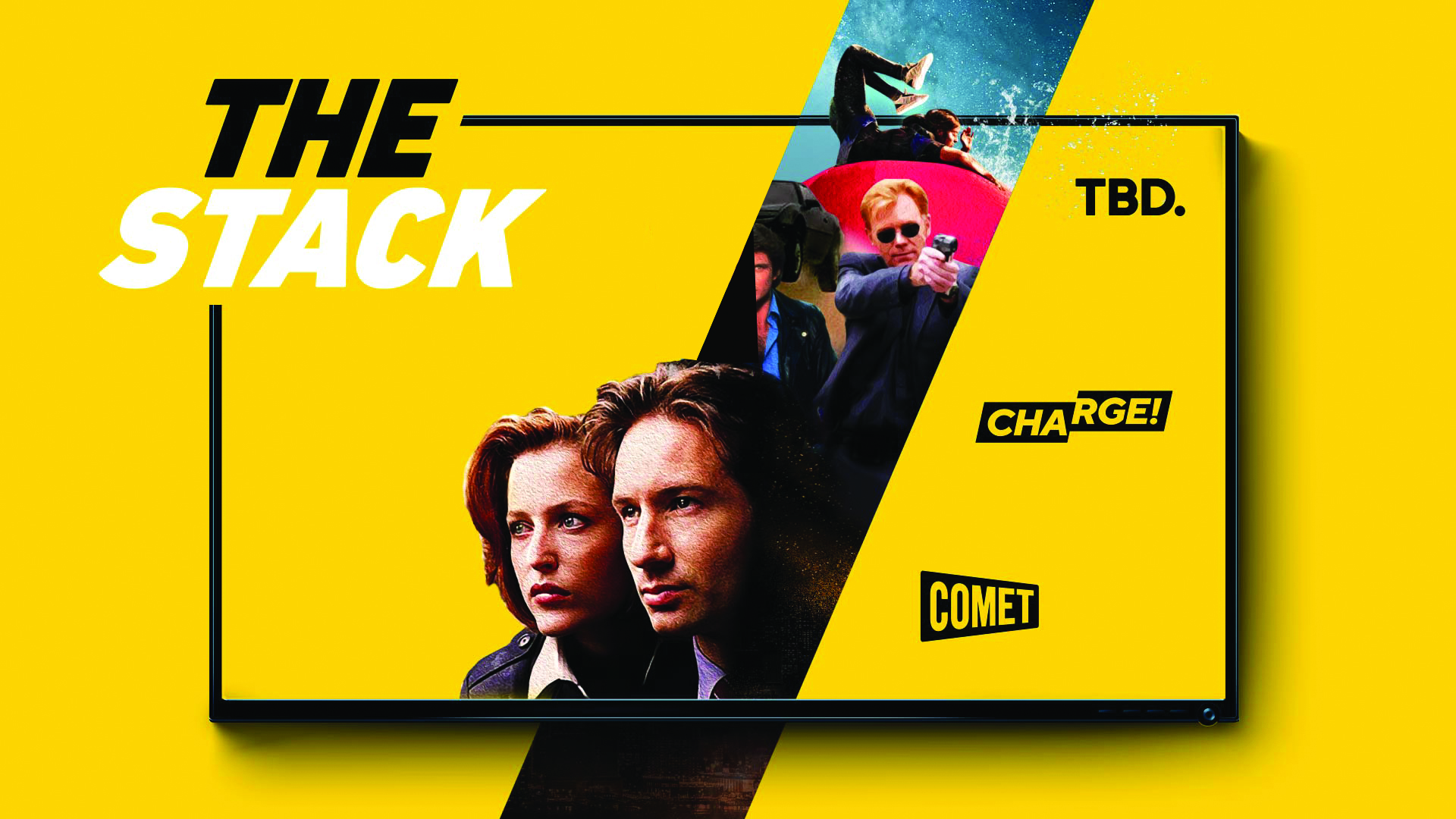Sinclair Pushes Its 'Stack' of Digital Over-the-Air Nets
Category should get boost from ATSC 3.0

While many in the TV business are investing billions in subscription streaming services, big broadcasters are focusing on free over-the-air digital channels.
Sinclair Broadcast Group has been investing in its digital channels — Comet TV, Charge and TBD — and is seeing a healthy increase in advertising revenue since getting ratings from Nielsen and upgrading their programming. In June, for example, Charge is adding CSI: Miami to its schedule.
“What we’ve tried to do with these networks is level up the programming to make them general-market worthy,” Scott Ehrlich, Sinclair senior VP, growth networks and content, said.
Sinclair is calling its channels The Stack in their first-ever upfront presentations. The 70 one-on-one meetings are aimed at getting media buyers to understand that digital channels offer familiar programming and a growing number of consumers are looking for free entertainment.
“Cord-cutting isn’t necessarily our goal as a company, but over-the-air is a quickly growing segment of the audience,” Ehrlich said, noting that Sinclair generates significant revenue in retransmission consent for its stations and subscriber fees for its regional sports networks.
“There’s a technology change coming that we’re highly invested in as a company that is certainly going to enhance the over-the-air experience,” he added, referring to NextGen TV.
Sinclair and other stations have started converting stations from the current broadcast format, ATSC, to the NextGen ATSC 3.0 standard. Sinclair expects half the country to be covered by ATSC 3.0 in 2022.
The smarter way to stay on top of broadcasting and cable industry. Sign up below
“This is a new part of the company and the part that’s obviously pretty exciting,” said Adam Ware, VP and general manager, national networks and platforms at Sinclair.
Multicasting Is Now a Business
Digital multicast channels have been around since the broadcast industry went digital in 2009. Most of the early channels subsisted on direct response advertising. More recently, larger broadcasters have been accumulating larger portfolios of channels.
The E.W. Scripps Co. bought Katz Broadcasting in 2017 for $292 million. Katz’s networks include Court TV, Bounce, Laff and Escape. It plans to launch two more channels, Defy and TrueReal, in June. Tegna launched Twist in April following its $77 million acquisition of Justice Network and Quest in 2019.
Comet TV launched in 2015. The science-fiction channel was owned by Sinclair and managed by MGM Television. In 2017, Sinclair and MGM launched Charge, which focused on action films with a sense of humor. Sinclair took over management of both channels in 2020. TBD, a youth-oriented channel, launched in 2016, owned by Sinclair and operated by Jukin Media.
Comet TV began getting Nielsen ratings in 2018, with Charge following in 2019 and TBD in 2020, letting the channels sell a mix of direct response and general-market advertising.
“General-market advertisers really started to look at these channels’ audiences, as opposed to the responsiveness of those audiences,” Ehrlich said.
According to Nielsen, after Comet TV started airing episodes of The X-Files in the 10 p.m. to 1 a.m. time period, viewing among 18-to-49-year-olds rose 357% second quarter to date, compared to the first quarter. After TBD added Wipeout and Fear Factor from 7 p.m. to 1 a.m., viewing in the demo rose 46% from Q1 and 103% from a year ago.
TBD in particular is more attractive to general-market advertisers because of its relatively young audience. Those young viewers were less likely to call an 800 number or log onto a website because of a direct response ad, Ehrlich said. The audiences of the channels are pretty distinct, he added.
Sinclair doesn’t break out revenue figures for its digital networks, but Ware said they’ve gotten a good response in the scatter market and revenues have exceeded the budget so far.
Comet TV, Charge and TBD are also multiplatform with a presence on Stirr, Sinclair’s streaming service, where some of their programming is available on-demand nationally.
Ware said the opportunity for free-over-the air channels will expand as NextGen TV takes root. ATSC 3.0 promises bandwidth for stations to carry more networks and makes it easier for viewers to tune them in.
“All of a sudden you’ve got real capacity,” Ware said. Now is the time to be proactive and launch channels, build their brands and get more digital channels to market. “Some might be paid and some might be free,” he added.
More Nets in the Offing
Sinclair is looking to launch more networks. The company is using Stirr to test channel concepts with an eye towards them becoming distributed as digital OTA networks, Ware said.
At some point, the networks will produce original programming, Ehrlich said. TBD dipped its toe in the water with a clip show called The Link and interstitial content featuring David Hasselhoff, star of Knight Rider, which aired on Charge.
To some degree, the digital broadcast channels are mirroring the way cable channels were built in the 1980s, targeting genres such as science fiction and comedy and relying on off-broadcast programming until the market demands original series.
Digital channels will be easier to watch because they’re being integrated with streaming channels in increasingly sophisticated smart TVs. But Ware warns, “If you don’t own a station group and you’re trying to do these, good luck.”
And channels are thriving because “there’s real content out there that people want to watch.” Ehrlich said. “I was sort of skeptical, a little bit, until I started to see the numbers.”
Jon has been business editor of Broadcasting+Cable since 2010. He focuses on revenue-generating activities, including advertising and distribution, as well as executive intrigue and merger and acquisition activity. Just about any story is fair game, if a dollar sign can make its way into the article. Before B+C, Jon covered the industry for TVWeek, Cable World, Electronic Media, Advertising Age and The New York Post. A native New Yorker, Jon is hiding in plain sight in the suburbs of Chicago.

